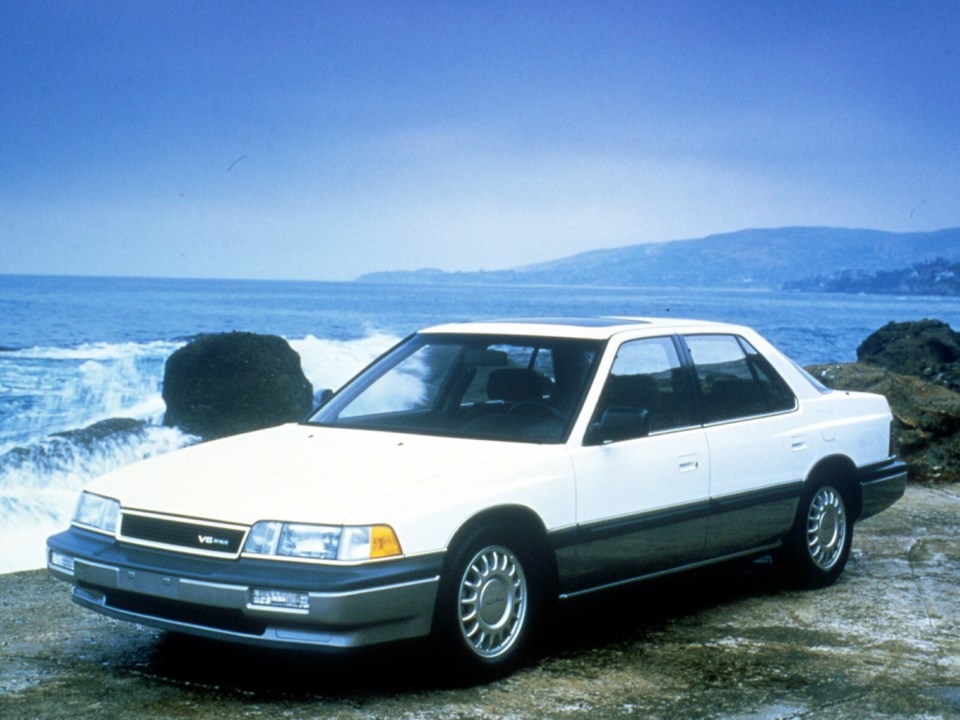Soichiro Honda was an automobile mechanic, a natural engineer and a man of ingenuity and action. After the Second World War, Japan鈥檚 severe transportation shortage prompted him to start installing small war-surplus gasoline engines on bicycles.
They proved popular, and business prospered so well he established Honda Motor Co. in Hamamatsu in 1948 to manufacture motorcycles. By 1959, Hondas were competing in the famous Isle of Man TT motorcycle races, and by 1961, Hondas won all their classes.
In 1963, Honda expanded into cars with the small 492-cc S500 sports roadster, which engine increases raised to the 791-cc S800. It was a delightful little car, but its tiny size limited sales.
Other models followed, including the small N360 sedan plus the N600 for export. It exported a few 600s (N600 at home) to California in 1969.
The 600 was too small for wide appeal, so Honda developed the larger front-drive Civic, introduced in 1973. This technically refined, agile two-door sedan was still small, but big enough to appeal to many North Americans. It launched Honda onto the world automobile stage.
Following this came the evolutionary 1976 Honda Accord coupe, followed by the sedan in 1978. It was like a small luxury car, and so well received that the Accord became Detroit鈥檚 benchmark compact sedan.
Honda prospered in North America, establishing car-manufacturing plants in Marysville, Ohio, in 1982 and Alliston, Ont., in 1986.
Honda鈥檚 final evolutionary step came in the mid-1980s with the formation of the new Acura division to produce upscale cars with Honda quality and the added cachet of advanced technology and luxury features.
The new division was created to separate Acura from Honda鈥檚 economy image. It was intended to challenge brands such as Mercedes-Benz, BMW et al, but be more affordable.
This formula would soon be successfully followed by Toyota and Nissan with their Lexus and Infiniti brands.
Acura offered a line of cars, but the one with the greatest impact was the Legend. This upscale model provided luxury features and appointment at a price thousands of dollars lower than European luxury brands.
In engineering its luxury four-door sedan (a mid-size coupe arrived a year later), Honda engineers gave it state-of-the-art technology. Its 2.5-litre aluminum V-6 had single belt-driven overhead camshafts operating four valves per cylinder. Fuel was fed through port injection, and its 161 horsepower was sent to the front wheels through a five-speed automatic transmission.
It rode on a 2,705-millimetre wheelbase and was 4,775 mm long, knocking on the door of the full-size class. Steering was rack-and-pinion, and it had disc brakes and independent coil-spring suspension on all four wheels.
The Legend slipped through the air with a coefficient of aerodynamic drag of only 0.30, which was very competitive for that time. Its styling could only be called conservative with some Honda family resemblance.
The Legend was introduced in Japan in the fall of 1986, and came to North America as a 1987 model. It was enthusiastically received by the motoring press and the public. Car and Driver included it in its annual Ten Best list three times in a row and it was Motor Trend鈥檚 1987 Import Car of the Year.
To compare the Legend with the competition, Car and Driver tested it against examples of luxury cars from Europe and North America, a Mercedes-Benz 300E and Cadillac Seville Elegante.
Not surprisingly, the M-B was ranked first, but the Legend was a close second, beating out America鈥檚 best. It was quickest in acceleration to 100聽km/h at 8.1 seconds with manual (9.6 automatic), and equal in interior space, comfort and fuel economy. The Japanese upstart was competitive with top European and American luxury cars right out of the box.
The Legend got upgrades along the way. The sedan got the coupe鈥檚 2.7-litre V-6 in 1988, and anti-lock brakes and the coupe鈥檚 improved rear suspension for 1989.
The bigger and more luxurious second-generation Legend arrived for 1991. The wheelbase was stretched 206 mm to 2,911 mm and overall length grew 175 mm to 4950, making the Legend a member of the full-size club.
Its V-6 was up to 3.2 litres and horsepower increased to 200 from the previous 161. When Car and Driver tested it against an Alfa Romeo, Audi, BMW, Mercedes-Benz and Volvo, the Legend came out on top. The Acura Legend was a leader in its class.
The second-generation Legend ended in 1995. In North America, it was renamed the Acura RL for 1996, and the Acura line had expanded to four models. The Legend had completed Honda鈥檚 journey from humble beginnings to the world-class car club.



